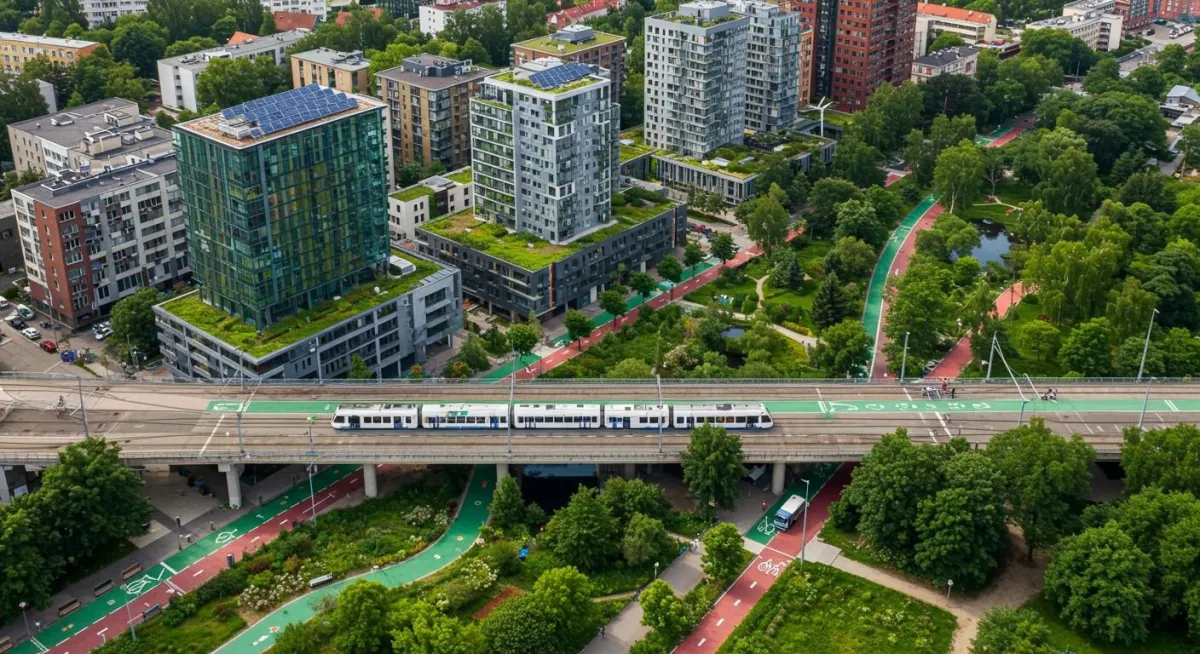
Sustainable Urban Planning: Building Cities of Tomorrow
"The greatness of a city is to be found in the quality of its public spaces, the care given to its environment, and its capacity to foster community." - Jaime Lerner, former Mayor of Curitiba, Brazil
Sustainable Urban Planning: Building Cities of Tomorrow
Introduction:
In an era of rapid urbanization, climate change, and resource depletion, the concept of sustainable urban planning has emerged as a critical framework for shaping the cities of tomorrow. As urban populations continue to grow—with the United Nations projecting that 68% of the world's population will live in urban areas by 2050—cities face unprecedented challenges in providing quality living environments while minimizing environmental impact.
Sustainable urban planning integrates environmental considerations, social equity, and economic viability to create livable, resilient, and efficient urban spaces. This approach encompasses various elements, from green infrastructure and public transportation systems to energy-efficient buildings and inclusive community design.
This comprehensive exploration will delve into how cities worldwide are implementing sustainable practices in urban planning, focusing on green spaces, public transportation, and sustainable housing. Through examining both established success stories and emerging innovations, we'll uncover the strategies, benefits, and challenges of creating truly sustainable urban environments for current and future generations.
Blueprint for Tomorrow: Transforming Urban Landscapes Through Sustainable Planning
The Rise of Green Spaces: Urban Oases in Concrete Jungles
Urban green spaces are no longer just aesthetic additions to city landscapes; they've become essential components of sustainable urban design, offering numerous environmental, social, and economic benefits.
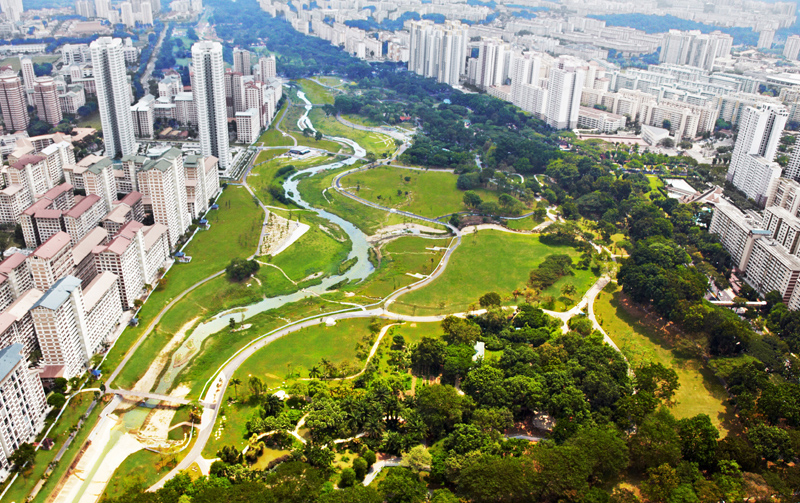
Environmental Impact of Urban Green Spaces
Research has consistently shown that urban green spaces significantly improve environmental conditions. According to a study published in the Earth.org data visualization report, properly designed urban green spaces can reduce urban temperatures by 2-8°C, helping to mitigate the urban heat island effect that plagues many cities Earth.Org.
Data from NASA reveals that cities in the Global South have just 70% of the greenery-related cooling capacity compared to cities in the Global North, highlighting inequities in urban green infrastructure distribution NASA.
Green spaces also play a crucial role in stormwater management. The U.S. Environmental Protection Agency reports that green infrastructure elements like rain gardens, bioswales, and permeable pavements can capture up to 90% of rainfall, significantly reducing runoff and preventing urban flooding EPA.
Social and Health Benefits
Beyond environmental impacts, green spaces offer substantial health and social benefits. A study cited by Earth.Org revealed that people living closer to green spaces have 55% less chance of developing psychiatric disorders like stress, anxiety, and substance abuse Earth.Org.
Singapore stands as a prime example of intentional green space development. Despite being one of the most densely populated cities globally, Singapore maintains 49.5% of its land area as vegetation cover as of 2022, according to ArcGIS StoryMaps. The city-state's "City in a Garden" vision has led to innovative approaches like the Gardens by the Bay and numerous rooftop gardens ArcGIS StoryMaps.
Revolutionizing Urban Mobility: Sustainable Public Transportation Solutions
Sustainable public transportation forms the backbone of environmentally conscious urban planning, reducing individual vehicle usage, lowering emissions, and improving air quality while enhancing mobility for all citizens.
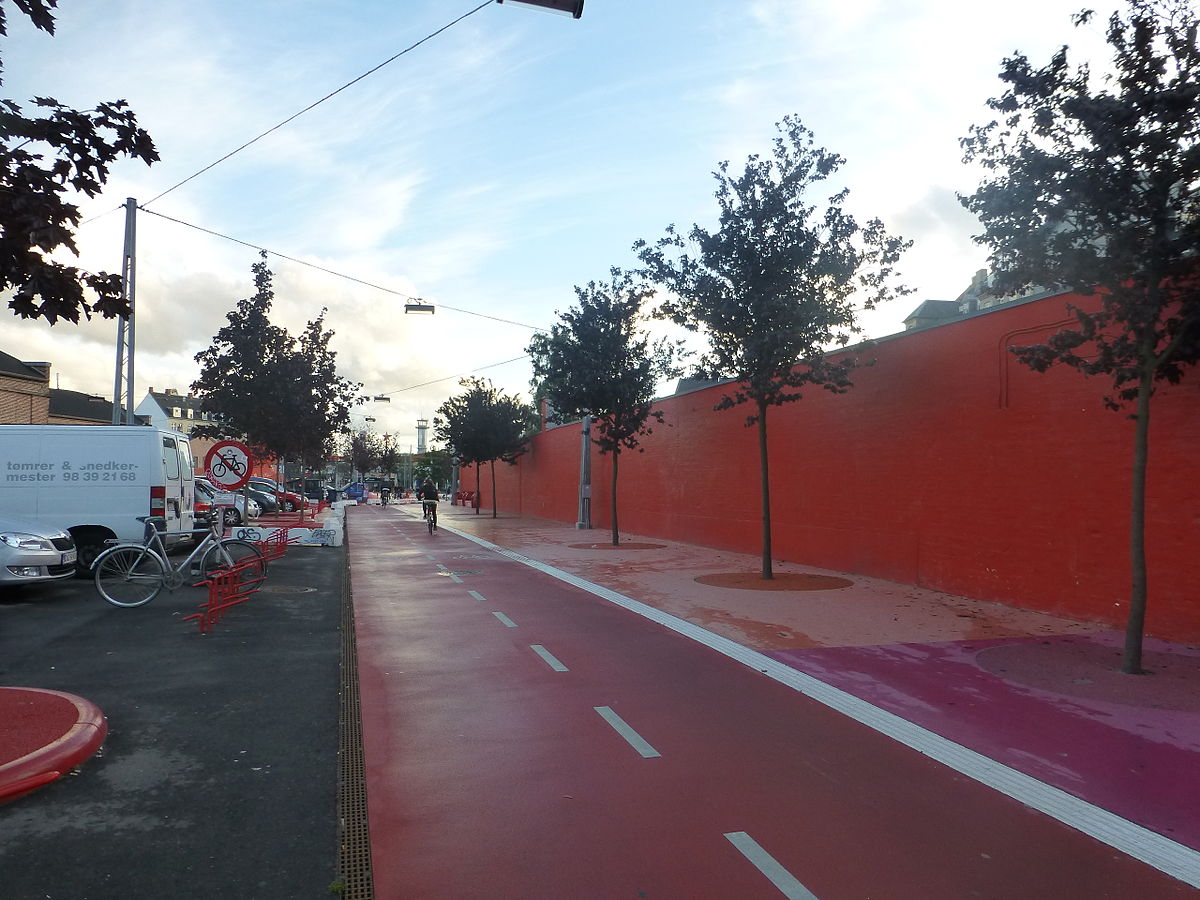
Copenhagen: The Bicycle Capital
Copenhagen has become synonymous with cycling culture and infrastructure, demonstrating how targeted urban planning can transform transportation patterns. According to the City of Copenhagen, cycling infrastructure includes:
A network of bike paths segregated from both pedestrians and vehicle traffic
Dedicated bicycle traffic lights allowing cyclists to leave intersections before cars
Separately colored bike paths where cars and bikes share road space use: urban sustainability exchange
This comprehensive approach has yielded impressive results. About 62% of Copenhagen's residents cycle to work or education daily, and the city aims to increase bicycle trips to account for 50% of all commuter trips by 2025 C40 Cities.
The economic benefits are equally significant. A study from the City of Copenhagen found that for each kilometer traveled by bicycle instead of car, society gains approximately €0.16 (about $0.18) in health benefits Planetizen.
Curitiba's Bus Rapid Transit: A Model System
The bus rapid transit (BRT) system in Curitiba, Brazil, stands as one of the most influential examples of sustainable public transportation globally. Pioneering the BRT concept 50 years ago, Curitiba created a system that functions like an above-ground subway but at a fraction of the cost.
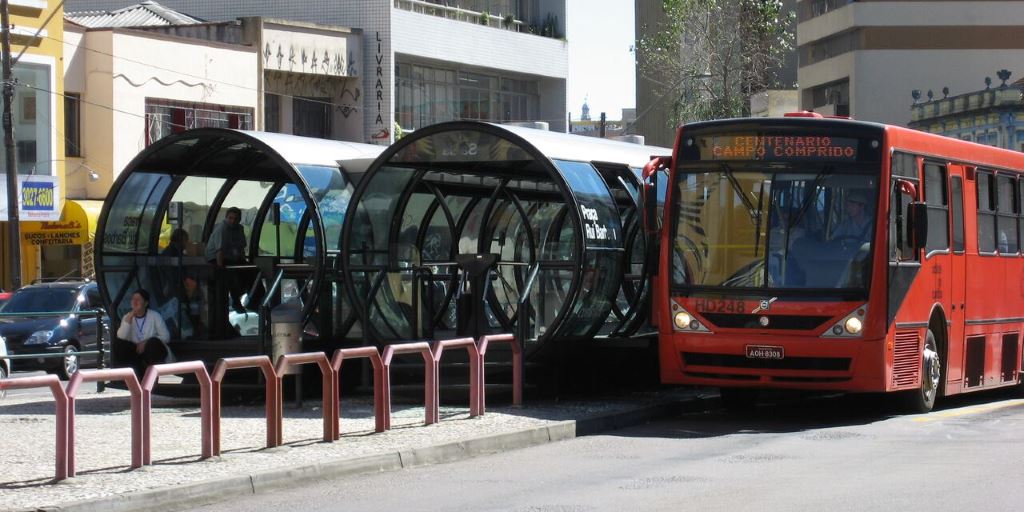
Key features of Curitiba's BRT system include:
Dedicated bus lanes that prevent mixing with regular traffic
Tube-shaped stations with pre-boarding payment systems
Articulated buses with multiple entry points for faster boarding and exiting
Integration with the city's zoning and development plans
The system has delivered impressive environmental benefits, eliminating approximately 27 million automobile trips annually and saving 10 million gallons of fuel, resulting in a 25% reduction in the city's CO2 emissions Hult.
Curitiba's BRT has inspired approximately 200 cities worldwide to implement similar models, demonstrating its replicability and adaptability to different urban contexts Streetsblog USA.
Building for the Future: Sustainable Housing Innovations
Sustainable housing represents a critical component of urban sustainability, addressing both environmental concerns and social equity issues through innovative design, materials, and energy systems.
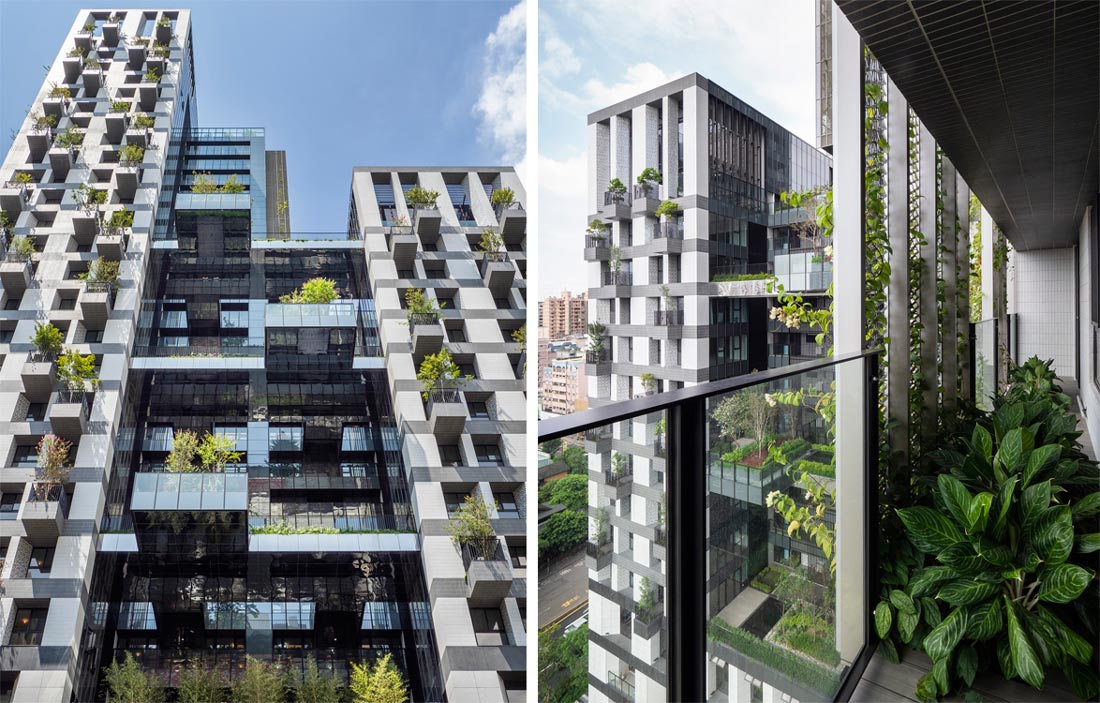
Green Building Standards and Performance
Cities worldwide are increasingly adopting green building standards to reduce the environmental footprint of their built environment. Singapore stands as a leader in this area with its Green Building Masterplan, which aims to green 80% of buildings (by Gross Floor Area) by 2030. As of December 2023, 58% of Singapore's buildings have already been greened Singapore Green Building Council.
The economic case for green buildings is compelling. According to data from the U.S. Green Building Council and RubyHome:
LEED buildings report almost 20% lower maintenance costs than typical commercial buildings
New green buildings achieve average operating cost savings of 10.5% in the first year
Over a five-year period, green buildings see an average operating cost reduction of 16.9% RubyHome
Moreover, green-certified buildings in Singapore's Central Business District maintain occupancy rates 2.5%-4.0% higher than non-certified buildings and command rents up to 12% higher, demonstrating their market value Cushman & Wakefield.
Innovative Approaches to Sustainable Housing
Cities are exploring various innovative approaches to sustainable housing, addressing both environmental considerations and affordability concerns:
Passive House Design: This ultra-efficient building standard significantly reduces energy consumption through superior insulation, airtight construction, and optimized solar gain. The world's largest passive house apartment complex in Heidelberg, Germany, demonstrates the scalability of this approach Haute Residence.
Mass Timber Construction: Cities like Portland, Oregon, are embracing mass timber construction for mid-rise residential buildings, reducing embodied carbon compared to concrete and steel while creating healthier indoor environments. Cross-laminated timber (CLT) buildings can reduce construction carbon footprints by up to 75% Happy Eco News.
Adaptive Reuse: Converting existing structures into housing reduces construction waste and preserves embodied energy. Cities like Barcelona are transforming former industrial buildings into affordable housing units, incorporating green retrofits and energy efficiency measures Parametric Architecture.
Co-Housing and Community-Centered Design: These models integrate private living spaces with shared amenities, reducing per-capita resource use while fostering community connections. Vauban in Freiburg, Germany, exemplifies this approach with car-free areas, community gardens, and shared energy systems.
Measuring Success: Urban Sustainability Metrics and Outcomes
Meaningful progress in sustainable urban planning requires robust measurement frameworks and evidence-based assessments. Cities are increasingly adopting comprehensive metrics to track their sustainability performance.
According to the Stockholm Environment Institute, urban sustainability metrics typically span three dimensions: environmental (emissions, resource use, ecosystem health), economic (investment, job creation, innovation), and social (equity, health, quality of life) Stockholm Environment Institute.
Success Stories in Numbers
The impact of sustainable urban planning initiatives is becoming increasingly quantifiable:
Public Transportation: Cities with well-developed public transportation systems show significant environmental benefits. For every passenger kilometer traveled by public transport instead of private vehicles, emissions are reduced by 60-80%, according to the International Energy Agency.
Green Buildings: The economic benefits of green buildings extend beyond energy savings. The World Green Building Council reports that improved indoor environmental quality in green buildings can increase worker productivity by 8-11%, translating to substantial economic benefits for businesses World Green Building Council.
Urban Density: Research cited by the University of Michigan's Center for Sustainable Systems found that doubling population-weighted urban density reduces CO2 emissions from household travel and residential energy use by 48% and 35%, respectively Center for Sustainable Systems.
Challenges and Future Directions
Despite significant progress, sustainable urban planning faces numerous challenges:
Implementation Barriers
Financial Constraints: Initial costs of sustainable infrastructure can be high, though lifecycle cost analyses often show long-term savings.
Policy Fragmentation: Coordinated policy across different sectors and levels of government remains difficult in many cities.
Knowledge Gaps: Technical capacity to implement sustainable solutions varies widely among cities globally.
Equity Concerns
Sustainable development must address social equity to be truly sustainable. According to UN-Habitat's Sustainable Housing for Sustainable Cities framework, housing policies must address affordability, accessibility, and cultural adequacy alongside environmental considerations UN-Habitat.
Future Opportunities
Looking ahead, several emerging trends promise to further advance sustainable urban planning:
Smart City Technologies: IoT sensors, data analytics, and digital twins are enabling more responsive and efficient urban systems, from traffic management to energy use optimization.
Nature-Based Solutions: Cities are increasingly recognizing the potential of working with natural systems rather than against them, incorporating features like constructed wetlands, urban forests, and living infrastructure.
Circular Economy Principles: Urban systems are being redesigned to eliminate waste and pollution, keep products and materials in use, and regenerate natural systems, creating more resilient and resource-efficient cities.
Climate Resilience Planning: As climate impacts intensify, cities are integrating adaptation and resilience measures into their sustainable planning frameworks, preparing for both gradual changes and extreme events.
Conclusion
Sustainable urban planning represents one of humanity's most important endeavors in creating livable, equitable, and environmentally responsible cities for the future. The examples from Copenhagen, Curitiba, Singapore, and other leading cities demonstrate that sustainable urban development is not just a theoretical ideal but an achievable reality with tangible benefits.
By embracing comprehensive approaches to green spaces, public transportation, and sustainable housing, cities can reduce environmental impacts while improving quality of life for residents. The data increasingly supports the economic case for sustainability, showing that well-designed initiatives deliver multiple benefits across environmental, social, and economic dimensions.
As urbanization continues and climate challenges intensify, sustainable urban planning will only grow in importance. The path forward requires collaborative effort from policymakers, planners, businesses, and citizens, guided by shared values of environmental stewardship, social equity, and long-term thinking. By learning from successful examples, measuring outcomes rigorously, and adapting approaches to local contexts, cities worldwide can transform themselves into more sustainable, resilient, and vibrant places to live.
Sources
Earth.Org - Data Proves the Health Benefits of Green Spaces: https://earth.org/data_visualization/data-proves-the-health-benefits-of-green-spaces/
NASA - Role of Green Spaces in Cooling Cities: https://science.nasa.gov/earth/climate-change/nasa-data-reveals-role-of-green-spaces-in-cooling-cities/
EPA - Benefits of Green Infrastructure: https://www.epa.gov/green-infrastructure/benefits-green-infrastructure
ArcGIS StoryMaps - Green + Growth: Singapore from Above: https://storymaps.arcgis.com/stories/34ac438da27d45c1b536ff702f6e04d8
Urban Sustainability Exchange - The City of Copenhagen's Bicycle Strategy: https://use.metropolis.org/case-studies/cycling-in-copenhagen
C40 Cities - Copenhagen: City of Cyclists: https://www.c40.org/case-studies/c40-good-practice-guides-copenhagen-city-of-cyclists/
Planetizen - Value of Bicycling in Copenhagen: https://www.planetizen.com/node/78731
Green City Times - Bus Rapid Transit and Urban Planning in Curitiba: https://www.greencitytimes.com/curitiba/
Hult - Greenovate! City of Curitiba, Brazil Rapid Transit System: https://www.hult.edu/blog/greenovate-city-of-curitiba-brazil-rapid-transit-system-innovation-excellence/
Streetsblog USA - Curitiba: 50 Years of Lessons from the World's First 'Bus Rapid Transit': https://usa.streetsblog.org/2024/10/17/curitiba-50-years-of-lessons-from-the-worlds-first-bus-rapid-transit
Singapore Green Building Council - A Brighter Shade of Green: https://www.sgbc.sg/a-brighter-shade-of-green/
RubyHome - Green Building Statistics: https://www.rubyhome.com/blog/green-building-stats/
Cushman & Wakefield - Banking on Green Office Buildings in Singapore: https://www.cushmanwakefield.com/en/singapore/insights/banking-on-green-office-buildings-in-singapore
Happy Eco News - 15 Eco-Innovations That Will Shape the Sustainable Homes of the Future: https://happyeconews.com/15-eco-innovations-that-will-shape-the-sustainable-homes-of-the-future/
Parametric Architecture - 10 Affordable Housing Trends Shaping Urban Living: https://parametric-architecture.com/10-affordable-housing-trends-shaping-urban-living/
Stockholm Environment Institute - Urban Sustainability Metrics: https://www.sei.org/publications/urban-sustainability-metrics/
World Green Building Council - The Business Case for Green Building: https://worldgbc.org/article/the-business-case-for-green-building-a-review-of-the-costs-and-benefits-for-developers-investors-and-occupants/
Center for Sustainable Systems - U.S. Cities Factsheet: https://css.umich.edu/publications/factsheets/built-environment/us-cities-factsheet
UN-Habitat - Sustainable Housing for Sustainable Cities: https://unhabitat.org/sustainable-housing-for-sustainable-cities-a-policy-framework-for-developing-cities
UN Foundation - 5 Statistics on Why Sustainable Urban Development Matters: https://unfoundation.org/blog/post/5-statistics-on-why-sustainable-urban-development-matters/
